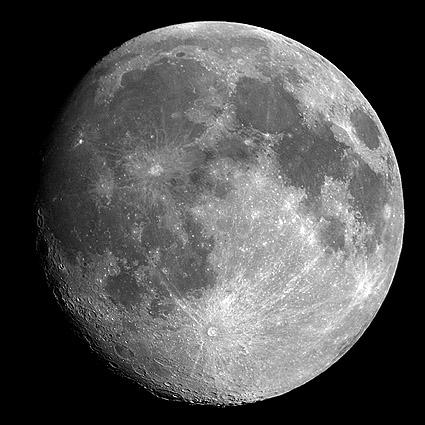Difference between revisions of "March 13, 2004"
(Created page with "__NOTOC__ =First Light on a Nearly Full Moon= ---- ===COMMENTS?=== Click on this icon image:PostIcon.jpg at the upper right to post a comment.") |
|||
| (8 intermediate revisions by the same user not shown) | |||
| Line 1: | Line 1: | ||
__NOTOC__ | __NOTOC__ | ||
=First Light on a Nearly Full Moon= | =First Light on a Nearly Full Moon= | ||
| − | + | <!-- Start of content --> | |
| − | + | <table width="640" border="0" align="center" cellpadding="6" cellspacing="2"> | |
| − | + | <tr> | |
| − | ---- | + | </tr> |
| − | === | + | </table> |
| − | + | <table width="85%" border="0" align="center" cellpadding="6" cellspacing="2"> | |
| + | <tr> | ||
| + | <td colspan="2"><div align="center"> | ||
| + | [[File:LPOD-2004-03-13.jpeg|LPOD-2004-03-13.jpeg]]</div> | ||
| + | </td> | ||
| + | </tr> | ||
| + | </table> | ||
| + | <table width="100%" border="0" cellpadding="8"> | ||
| + | <tr> | ||
| + | <td><div align="center"><p>Image Credit: [mailto:mark@stronge.org.uk Mark Stronge]</p></div></td> | ||
| + | </tr> | ||
| + | </table> | ||
| + | <table class="story" border="0" bgcolor="#FFFFFF" width="90%" cellpadding="10" align="center"><tr><td> | ||
| + | <p class="story" align="center"><b>First Light on a Nearly Full Moon </b></p> | ||
| + | <p class="story" align="left"> | ||
| + | A new telescope brings great joy, anticipation and too often, clouds. Here is a first light image by Mark Stronge | ||
| + | of Northern Ireland of the nearly full Moon of March 5th. Mark followed the now standard procedure of combining | ||
| + | multiple ccd images and got a first image to be proud of with good sharpness and tonal contrast. Along the limb | ||
| + | are the large craters Bailly in the south and Hevelius near the equator. | ||
| + | </p> | ||
| + | <p><b>Technical Details:</b><br> | ||
| + | This first light image was taken Friday 5th March at 00:45hrs UT with my new Orion ED 80mm refractor | ||
| + | on a Vixen GP mount. Image captured using a Minolta Dimage 7, 5 mega-pixel camera coupled afocally | ||
| + | to a Scopetronix MaxView 40mm eyepiece. Exposure was f2.8, 1/1000 second shutter and ISO100. 12 | ||
| + | images were photographed, then aligned and stacked in Registax. Final processing was done in Paint Shop Pro. | ||
| + | </p> | ||
| + | <p class="story"><b>Related Links:</b><br> | ||
| + | [http://www.eaas.co.uk/club_members/stronge_astrophotography_6.html Stronge Astrophotography]<br> | ||
| + | [http://www.telescope.com/shopping/product/detailmain.jsp?itemID=6306&itemType=PRODUCT&RS=1&keyword= Orion 80mm ED Apochromatic refractor] | ||
| + | </p> | ||
| + | <p><b>Yesterday's LPOD:</b> [[March 12, 2004|Forming the Moon]] </p> | ||
| + | <p><b>Tomorrow's LPOD:</b> [[March 14, 2004|Happy Birthday, Einstein]] </p> | ||
| + | </td></tr> | ||
| + | </table> | ||
| + | <!-- start bottom --> | ||
| + | <table width="100%" border="0" cellspacing="2" cellpadding="4"> | ||
| + | <tr> | ||
| + | <td><hr></td> | ||
| + | </tr> | ||
| + | <tr> | ||
| + | <td> | ||
| + | <p align="center" class="main_titles"><b>Author & Editor:</b><br> | ||
| + | [mailto:tychocrater@yahoo.com Charles A. Wood]</p> | ||
| + | <!-- Cleanup of credits --> | ||
| + | <!-- Cleanup of credits --> | ||
| + | <!-- Cleanup of credits --> | ||
| + | <!-- Cleanup of credits --> | ||
| + | <!-- Cleanup of credits --> | ||
| + | <!-- Cleanup of credits --> | ||
| + | <!-- Cleanup of credits --> | ||
| + | </tr> | ||
| + | </table> | ||
| + | <p> </p> | ||
| + | <!-- End of content --> | ||
| + | {{wiki/ArticleFooter}} | ||
Latest revision as of 19:13, 7 February 2015
First Light on a Nearly Full Moon
Image Credit: Mark Stronge |
|
First Light on a Nearly Full Moon A new telescope brings great joy, anticipation and too often, clouds. Here is a first light image by Mark Stronge of Northern Ireland of the nearly full Moon of March 5th. Mark followed the now standard procedure of combining multiple ccd images and got a first image to be proud of with good sharpness and tonal contrast. Along the limb are the large craters Bailly in the south and Hevelius near the equator. Technical Details: Related Links: Yesterday's LPOD: Forming the Moon Tomorrow's LPOD: Happy Birthday, Einstein |
|
Author & Editor: |
COMMENTS?
Register, Log in, and join in the comments.




